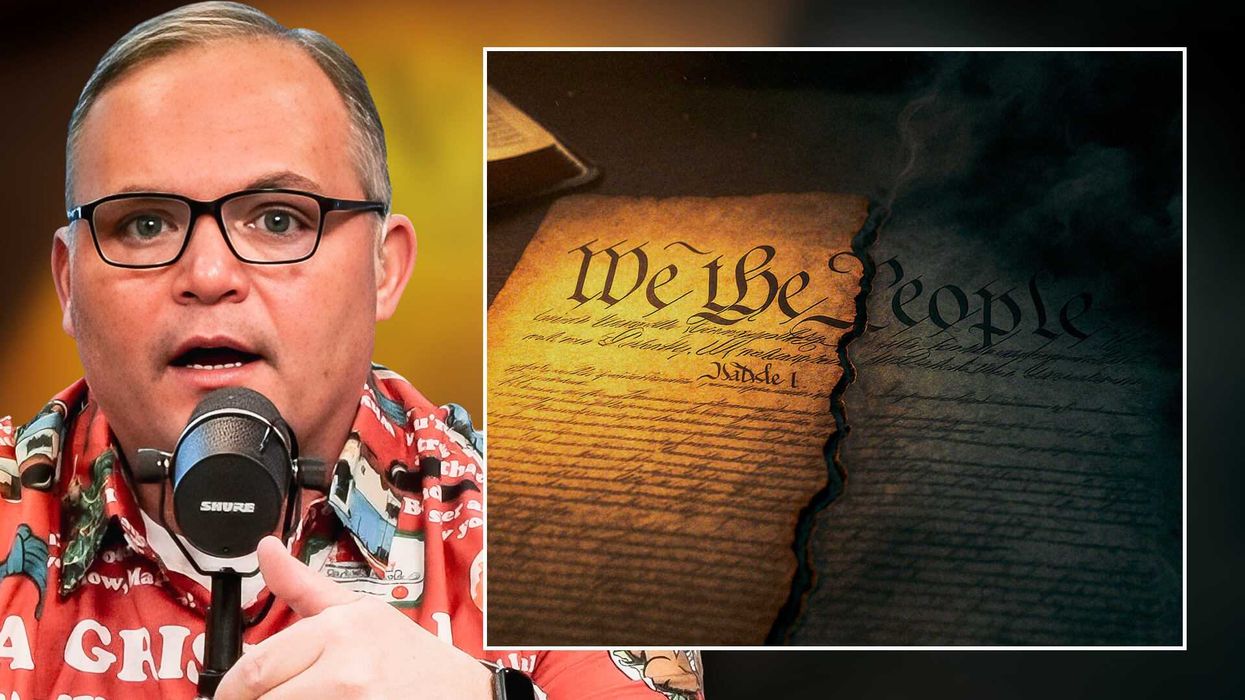
© 2025 Blaze Media LLC. All rights reserved.
In 2009, Wired Magazine first published a short article chronicling the preservation (or lack thereof) of the Declaration of Independence. In each of the two years since, Wired.com has republished the article around the Fourth of July. Pretty interesting off the bat -- the article's first point is that it took 127 years before anyone said “Hey, maybe we should preserve this thing.”
From Wired:
"During the Revolutionary War, the Declaration of Independence was rolled up and toted around like a Thomas Bros. map, although, given the vicissitudes of war, that’s perhaps understandable. Less understandable is what came later. Water was spilled on it while it was being copied in 1823. Then it was tacked up on the wall at the U.S. Patent Office for about 40 years, where it was subjected to a strong northern light.Finally, the suggestion was made in 1903 that maybe it shouldn’t be exposed to sunlight and, oh, by the way, maybe it should be kept dry, too. The latter turned out to be a bad idea because the Declaration, which was written on parchment, actually needs a bit of moisture to keep from cracking
It wasn’t until 1951 that the first modern preservation efforts began. The document was sealed inside a bronze, bullet-proof glass case at the National Archives building in Washington, D.C. Humidified helium replaced oxygen to prevent further erosion, and the glass was filtered to cut down on light exposure.
Beginning in 1987, using camera equipment developed for the Hubble Space Telescope, preservationists were able to monitor the Declaration for even the most minute signs of fading or flaking ink.
The measures proved effective, so much so that the Declaration outlived its original protective case. After undergoing careful inspection for further erosion in 2003, the document was resealed in a titanium casement filled with inert argon gas. Similar preservation techniques are used to protect the Bill of Rights and Constitution."
The document, of course, currently is on display at the National Archives. There are plenty of resources availabable online as well. Archives.Gov:
"Chronologically, it is helpful to divide the history of the Declaration after its signing into five main periods, some more distinct than others. The first period consists of the early travels of the parchment and lasts until 1814. The second period relates to the long sojourn of the Declaration in Washington, DC, from 1814 until its brief return to Philadelphia for the 1876 Centennial. The third period covers the years 1877-1921, a period marked by increasing concern for the deterioration of the document and the need for a fitting and permanent Washington home. Except for an interlude during World War II, the fourth and fifth periods cover the time the Declaration rested in the Library of Congress from 1921 to 1952 and in the National Archives from 1952 to the present."
In contrast to Wired's piece, the National Archives notes it only took 100 years before preservation methods were first initiated to protect the document:
"The Public Ledger for May 8, 1876, noted that it was in Independence Hall framed and glazed for protection, and . . . deposited in a fireproof safe especially designed for both preservation and convenient display. '"
Interesting to keep in mind this holiday weekend. Have a happy Fourth of July!
Want to leave a tip?
We answer to you. Help keep our content free of advertisers and big tech censorship by leaving a tip today.
Want to join the conversation?
Already a subscriber?
more stories
Sign up for the Blaze newsletter
By signing up, you agree to our Privacy Policy and Terms of Use, and agree to receive content that may sometimes include advertisements. You may opt out at any time.
Related Content
© 2025 Blaze Media LLC. All rights reserved.
Get the stories that matter most delivered directly to your inbox.
By signing up, you agree to our Privacy Policy and Terms of Use, and agree to receive content that may sometimes include advertisements. You may opt out at any time.







